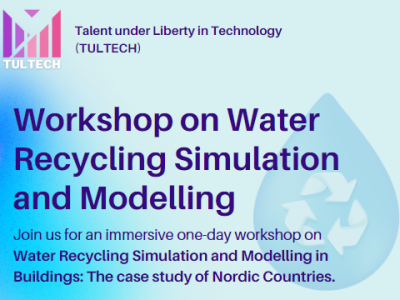Announcements
No announcements yet
New blog posts

Completion of Workshop on Water Recling Simulation and Modelling: Unlocking the Future of Water Management
19 March, 2024 by Charlotte Lee
We are thrilled to announce the successful...

IJITIS Journal Meeting and SWOT Analysis at TULTECH
15 January, 2024 by Charlotte Lee
Greetings, TULTECH community! In our...

A Milestone Meeting for EIL: Shaping the Future of Environmental Industry Letters
15 December, 2023 by Charlotte Lee
Dear TULTECH Community, We are delighted to...
Weather

-7°C
Calendar of Events
Universe composed of water? Large exoplanet's environment contains methane and atmospheric carbon dioxide.
Posted on 22 September, 2023 by Charlotte Lee

Hubble Space Telescope observations provided the first look at this habitable-zone exoplanet, revealing details about its atmosphere that led to further research that fundamentally altered our understanding of the system.
K2-18 b is located in the constellation Leo, 120 light-years from Earth, and orbits the cold dwarf star K2-18 within the habitable zone. K2-18 b is one of the many exoplanets that are completely unique to our solar system because of its intermediate size between that of Earth and Neptune. Due to the lack of analogous nearby planets, the nature of these'sub-Neptunes'' atmospheres is a hotly contested topic among astronomers.
Some scientists have high hopes for finding signs of life on exoplanets, and the possibility that sub-Neptune K2-18 b is a Hycean exoplanet is interesting.
Nikku Madhusudhan, an astronomer at the University of Cambridge and lead author of the publication revealing these results, said, "Our findings underscore the importance of considering diverse habitable environments in the search for life elsewhere." The larger Hycean worlds are much more suitable to atmospheric observations, although smaller rocky planets have traditionally been the primary focus of the hunt for life on exoplanets.
Methane and carbon dioxide are plentiful, whereas ammonia is scarce, lending credence to the idea that K2-18 b has a water ocean beneath its hydrogen-rich atmosphere. These preliminary Webb observations may have also shown the presence of a chemical known as dimethyl sulphide (DMS). Only living things on Earth are capable of making this. Phytoplankton in marine areas are responsible for releasing the vast majority of DMS into Earth's atmosphere.
Scientist Savvas Constantinou of Cambridge University noted that their findings were based on only two observations of K2-18 b, but that many more were on the way. Accordingly, "this means our work here is but an early demonstration of what Webb can observe in habitable-zone exoplanets."
The team's findings will be published in the Letters section of The Astrophysical Journal.
To further confirm these findings and shed new light on the environmental conditions on K2-18 b, the team plans to perform follow-up research using the telescope's MIRI (Mid-Infrared Instrument) spectrograph.
If life were found on a habitable exoplanet, "it would transform our understanding of our place in the universe," Madhusudhan said. According to the authors, "our findings are a promising step towards a deeper understanding of Hycean worlds in this quest."
Source: NASA/Goddard Space Flight Centre contributed the materials used in this blog post. Editing for clarity and length may occur.
Event Categories
Past Events
Workshop on Artificial Intelligence Applications in Smart Cities
20 August, 2024
Workshop on Advanced Water Treatment Processes
10 July, 2024
Workshop on Water Recycling Simulation and Modelling
15 March, 2024Today In History
Here are some interesting facts ih history happened on 9 January.
- Conneticut becomes 5th state
- Jean Pierre Blanchard makes 1st balloon flight in North America
- 1st income tax imposed in England
- Daguerrotype process announced at French Academy of Science
- Thomas Henderson measures 1st stellar parallax Alpha Centauri
- Caroline Herschel "1st lady of astronomy " dies at 98 in Germany
- 1st SF paper 'California Star' published
- 1st commercial bank in SF established
- Astor Library opened in NY
- Mississippi becomes 2nd state to secede from US
- AL Baltimore baseball team bought to move to NY for $18 000
- US marines invade Honduras
- Exposition (now Civic) Auditorium dedicated
- Semi-automatic rifles adopted by US army
- As vowed MacArthur returned to Philippines
- Bryan Trottier failed in 4th Islander penalty shot
- Commonwealth of Northern Marianas established
- 5.9 earthquake in New England & Canada; 1st since 1855
- New Nicaraguan constitution takes effect





